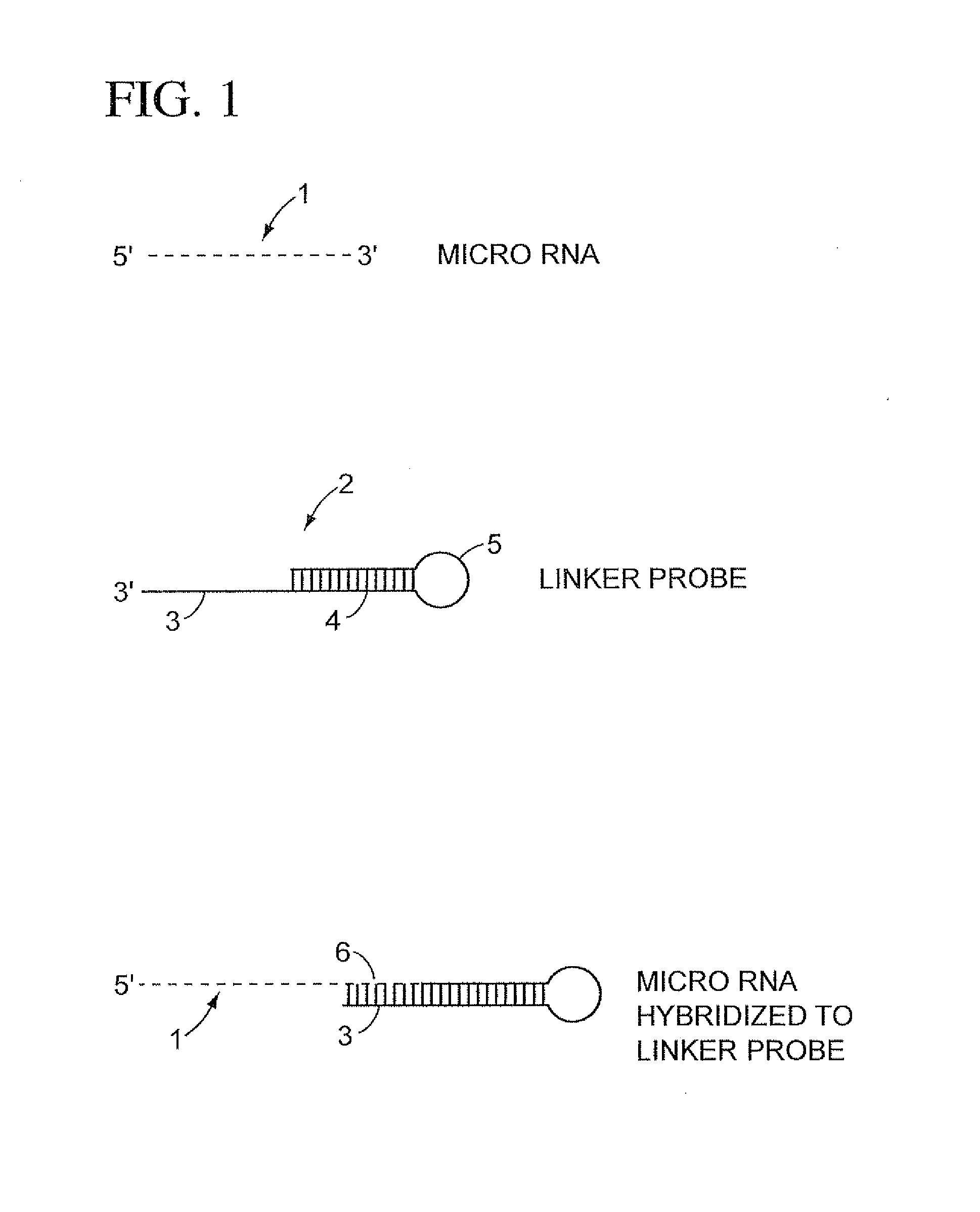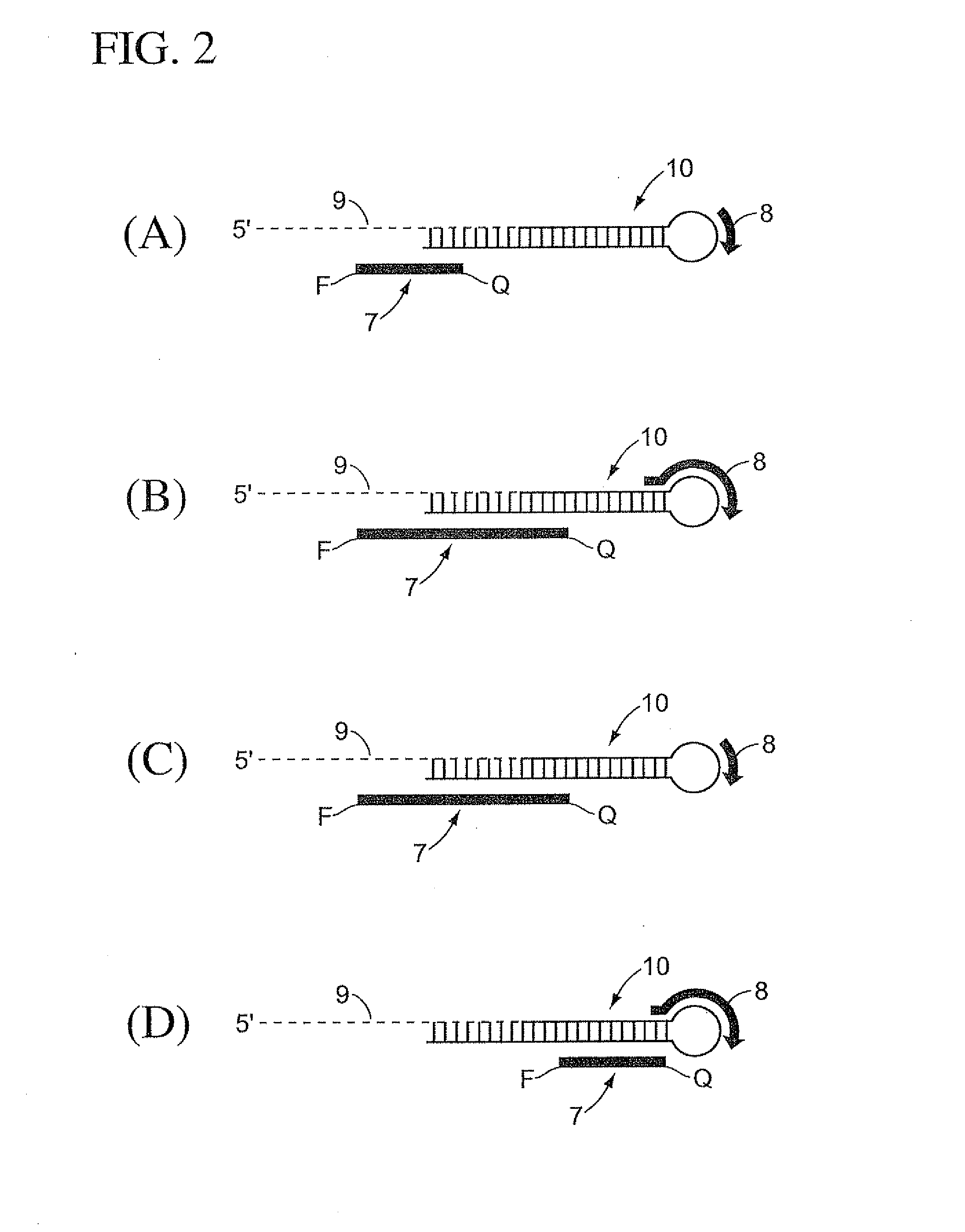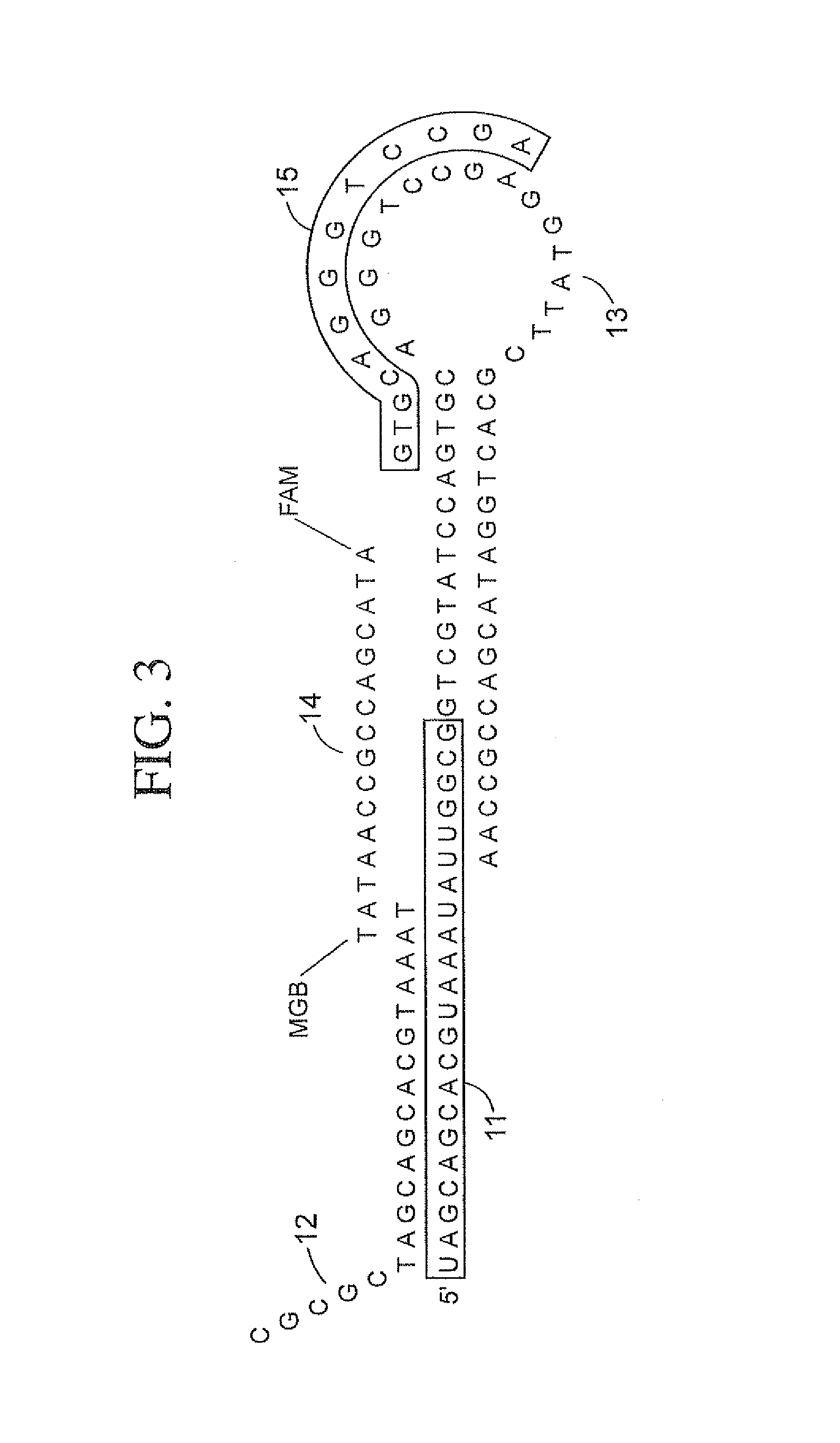Methods, compositions, and kits comprising linker probes for quantifying polynucleotides
a technology of linker probes and polynucleotides, applied in the field of molecular and cell biology, can solve the problems of difficult study of short mirna length, laborious and less accurate process, and lack of reliable technology for mirna quantitation
- Summary
- Abstract
- Description
- Claims
- Application Information
AI Technical Summary
Problems solved by technology
Method used
Image
Examples
example 1
[0060]A single-plex reaction was performed in replicate for a collection of mouse miRNAs, and the effect of the presence or absence of ligase, as well as the presence or absence of reverse transcriptase, determined. The results are shown in Table 1 as Ct values.
[0061]First, a 6 ul reaction was set up comprising: 1 ul Reverse Transcription Enzyme Mix (Applied Biosystems part number 4340444) (or 1 ul dH2O), 0.5 ul T4 DNA Ligase (400 units / ul, NEB) (or 0.5 ul dH20), 0.25 ul 2M KCl, 0.05 ul dNTPs (25 mM each), 0.25 ul T4 Kinase (10 units / ul, NEB), 1 ul 10×T4 DNA ligase buffer (NEB), 0.25 ul Applied Biosystems RNase Inhibitor (10 units / ul), and 2.2 ul dH20 Next, 2 ul of the linker probe (0.25 uM) and RNA samples (2 ul of 0.25 ug / ul mouse lung total RNA (Ambion, product number 7818) were added. Next, the reaction was mixed, spun briefly, and placed on ice for 5 minutes.
[0062]The reaction was then incubated at 16 C for 30 minutes, 42 C for 30 minutes, followed by 85 C for 5 minutes, and th...
example 2
[0067]A multiplex (12-plex) assay was performed and the results compared to a corresponding collection of single-plex reactions. Additionally, the effect of the presence or absence of ligase, as well as the presence or absence of reverse transcriptase, was determined. The experiments were performed essentially the same as in Example 1, and the concentration of each linker in the 12-plex reaction was 0.05 uM, thereby resulting in a total linker probe concentration of 0.6 uM. Further, the diluted 12-plex reverse transcription product was split into 12 different PCR amplification reactions, wherein a miRNA forward primer and a universal reverse primer and a detector probe where in each amplification reaction. The miRNA sequences, Forward primers, and TaqMan detector probes are included in Table 2. The results are shown in Table 3.
[0068]
TABLE 3Singleplex vs. Multiplex Assay With Or Without T4 DNA Ligase1-plex Ct12-plex CtLigation +Ligation +RTLigation +RTRT vs RT1- vs.miRNARTonlyRTonlyo...
example 3
[0069]An experiment was performed to determine the effect of buffer conditions on reaction performance. In one set of experiments, a commercially available reverse transcription buffer from Applied Biosystems (part number 43400550) was employed in the hybridization and extension reaction. In a corresponding set of experiments, a commercially available T4 DNA ligase buffer (NEB) was employed in the hybridization and extension reaction. The experiments were performed as single-plex format essentially as described for Example 1, and each miRNA was done in triplicate. The results are shown in Table 4, comparing RT buffer (AB part #4340550) vs T4 DNA ligase buffer.
[0070]
TABLE 4RT BufferT4 DNA Ligase BufferRT vsIIIIIIMeanIIIIIIMeanT4 Bufferlet-7a122.722.822.822.820.820.720.620.72.1mir-1618.418.518.618.517.717.817.917.80.7mir-2023.623.723.823.723.123.123.023.10.6mir-2120.420.420.520.419.419.319.219.31.1mir-2224.023.924.124.022.722.722.722.71.3mir-26a19.819.920.119.918.919.019.018.91.0mir-2...
PUM
| Property | Measurement | Unit |
|---|---|---|
| Tm | aaaaa | aaaaa |
| Δ Tm | aaaaa | aaaaa |
| Δ Tm | aaaaa | aaaaa |
Abstract
Description
Claims
Application Information
 Login to View More
Login to View More - R&D
- Intellectual Property
- Life Sciences
- Materials
- Tech Scout
- Unparalleled Data Quality
- Higher Quality Content
- 60% Fewer Hallucinations
Browse by: Latest US Patents, China's latest patents, Technical Efficacy Thesaurus, Application Domain, Technology Topic, Popular Technical Reports.
© 2025 PatSnap. All rights reserved.Legal|Privacy policy|Modern Slavery Act Transparency Statement|Sitemap|About US| Contact US: help@patsnap.com



